Archive for January, 2018
-
AFLAC Earns 1.63 per Share for Q4
Eddy Elfenbein, January 31st, 2018 at 4:32 pmAFLAC (AFL) just reported Q4 operating earnings of $1.60 per share and the weak yen knocked off three cents per share. Adjusting for that, the duck stock raked in $1.63 per share last quarter. That’s an increase of 13.2% over Q4 2016.
For all of 2017, AFL’s revenues fell 4.0% to $21.7 billion. Operating earnings came in at $6.81 per share compared with $6.50 per share in 2016. The weak yen cost AFLAC 10 cents per share. Adjusting for that, operating earnings rose 6.3% last year.
AFLAC also raised its quarterly dividend from 45 to 52 cents per share. That’s an increase of 15.6%. The dividend is payable on March 1 to shareholders of record at the close of business on February 21.
For 2018, AFLAC is looking for earnings to range between $7.45 to $7.75 per share. That assumes a yen/dollar rate of 112.16 which was the average for 2017.
-
Today’s Fed Statement
Eddy Elfenbein, January 31st, 2018 at 2:00 pmHere’s today’s FOMC policy statement. As expected, the Fed didn’t raise rates but a rate hike in March is widely expected on Wall Street.
Information received since the Federal Open Market Committee met in December indicates that the labor market has continued to strengthen and that economic activity has been rising at a solid rate. Gains in employment, household spending, and business fixed investment have been solid, and the unemployment rate has stayed low. On a 12-month basis, both overall inflation and inflation for items other than food and energy have continued to run below 2 percent. Market-based measures of inflation compensation have increased in recent months but remain low; survey-based measures of longer-term inflation expectations are little changed, on balance.
Consistent with its statutory mandate, the Committee seeks to foster maximum employment and price stability. The Committee expects that, with further gradual adjustments in the stance of monetary policy, economic activity will expand at a moderate pace and labor market conditions will remain strong. Inflation on a 12‑month basis is expected to move up this year and to stabilize around the Committee’s 2 percent objective over the medium term. Near-term risks to the economic outlook appear roughly balanced, but the Committee is monitoring inflation developments closely.
In view of realized and expected labor market conditions and inflation, the Committee decided to maintain the target range for the federal funds rate at 1-1/4 to 1‑1/2 percent. The stance of monetary policy remains accommodative, thereby supporting strong labor market conditions and a sustained return to 2 percent inflation.
In determining the timing and size of future adjustments to the target range for the federal funds rate, the Committee will assess realized and expected economic conditions relative to its objectives of maximum employment and 2 percent inflation. This assessment will take into account a wide range of information, including measures of labor market conditions, indicators of inflation pressures and inflation expectations, and readings on financial and international developments. The Committee will carefully monitor actual and expected inflation developments relative to its symmetric inflation goal. The Committee expects that economic conditions will evolve in a manner that will warrant further gradual increases in the federal funds rate; the federal funds rate is likely to remain, for some time, below levels that are expected to prevail in the longer run. However, the actual path of the federal funds rate will depend on the economic outlook as informed by incoming data.
Voting for the FOMC monetary policy action were Janet L. Yellen, Chair; William C. Dudley, Vice Chairman; Thomas I. Barkin; Raphael W. Bostic; Lael Brainard; Loretta J. Mester; Jerome H. Powell; Randal K. Quarles; and John C. Williams.
-
Today’s ADP Report = 234,000
Eddy Elfenbein, January 31st, 2018 at 12:28 pmThis morning’s ADP report showed that 234,000 private sector jobs were made last month. The government report will come out on Friday. Here’s a comparison of the ADP report (blue) and the government report (red).
Note that the blue bar isn’t the regular NFP report. It’s the private sector jobs portion of NFP.
-
The Bond Market’s Impact on Stocks
Eddy Elfenbein, January 31st, 2018 at 10:04 amAt the WSJ, Ben Eisen highlights the impact of higher bond yields.
Rising bond yields are starting to compete with stocks that pay some of the biggest dividends, leaving these companies behind even as the stock market has rallied to new highs.
The S&P utilities sector is down about 10% since the end of November and the real-estate sector has fallen 4.9%, sharply underperforming the S&P 500’s 6.6% rise. Companies in both groupings typically pay out big dividends relative to their stock prices, giving them high dividend yields.
For years, investors poured money into high-dividend stocks as they sought investment income that outpaced superlow yields in the bond market, which were held down by the Federal Reserve’s low-rate policy. But the central bank is reversing course, leading to a rise in bond yields that has accelerated in recent days.
-
Check Point Software Earns $1.58 per Share
Eddy Elfenbein, January 31st, 2018 at 9:46 amThe stock market is bouncing back this morning. Check Point Software (CHKP) reported Q4 results of $1.58 per share which topped estimates by eight cents per share. The company had projected earnings between $1.45 and $1.55 per share. For the year, CHKP made $5.33 per share which was an increase of 13% over 2016.
“Fourth quarter revenues were in line with our projections while EPS exceeded the top end of our range. As we move into 2018, the cyberattacks that organizations are experiencing today are now Gen V (5th Generation) while most enterprise security protections deployed are still below Gen III (3rd Generation)” Said Gil Shwed, Founder and CEO of Check Point Software Technologies. “To enable customers to bridge the gap we have launched Infinity Total Protection – a revolutionary security consumption model that is designed to enable organizations of all sizes to close the gap and prevent Gen V cyberattacks.”
Here are some financial highlights for the quarter.
• Total Revenue: $506 million compared to $487 million in the fourth quarter of 2016, a 4 percent increase year over year.
• Security Subscriptions Revenues: $130 million compared to $110 million in the fourth quarter of 2016, an 18 percent increase year over year.
• GAAP Operating Income: $267 million compared to $241 million in the fourth quarter of 2016, representing 53 percent and 50 percent of revenues in 2017 and 2016, respectively.
• Non-GAAP Operating Income: $292 million compared to $266 million in the fourth quarter of 2016, representing 58 percent and 55 percent of revenues in 2017 and 2016, respectively.
• GAAP Taxes on Income: $40 million compared to $30 million in the fourth quarter of 2016.
• GAAP Net Income and Earnings per Diluted Share: GAAP net income was $239 million compared to $222 million in the fourth quarter of 2016. GAAP earnings per diluted share were $1.46 compared to $1.31 in the fourth quarter of 2016, an 11 percent increase year over year.
• Non-GAAP Net Income and Earnings per Diluted Share: Non-GAAP net income was $259 million compared to $247 million in the fourth quarter of 2016. Non-GAAP earnings per diluted share were $1.58 compared to $1.46 in the fourth quarter of 2016, an 8 percent increase year over year.
• Deferred Revenues: As of December 31, 2017, deferred revenues were $1,187 million compared to $1,066 million as of December 31, 2016, an 11 percent increase year over year.
• Cash Flow: Cash flow from operations of $248 million compared to $183 million in the fourth quarter of 2016.
• Share Repurchase Program: During the fourth quarter of 2017, the company repurchased approximately 2.4 million shares at a total cost of approximately $250 million.
AFLAC is due to report later today.
-
Morning News: January 31, 2018
Eddy Elfenbein, January 31st, 2018 at 6:59 amEuro-Area Inflation Slowdown Highlights ECB’s Uphill Battle
Federal Reserve Expected to Leave Rates Unchanged
Fujifilm Buying Control of Xerox to Form $18 Billion Company
The ‘Amazon Effect’ Is About To Hit Healthcare
How Bitfinex, Tether are Raising Eyebrows in the Cryptocurrency Market
Facebook Bans Ads Associated With Cryptocurrencies
Line Expands Into Cryptocurrency Trading Amid Surprise Loss
AMD Earnings Show Crypto and PC Strength, Stock Bounces Around
Surging Samsung Electronics Takes Intel’s Chipmaking Crown
Tackling the Internet’s Central Villain: The Advertising Business
Blackstone Bets Big on Wall St. Information Business with Thomson Reuters Deal
Cullen Roche: Do Bond Prices Have Momentum?
Roger Nusbaum: Four Weeks of Gains to Start 2018? Don’t Mind If We Do
Be sure to follow me on Twitter.
-
Worst Day in Five Months
Eddy Elfenbein, January 30th, 2018 at 4:54 pmThe S&P 500 lost 1.09% today. This was the worst day since August 17, 2017.
Our Buy List lost 0.71% today.
The VIX rose 6.9% today to reach 14.79. That may sound high but bear in mind that the VIX was above this level every day from July 2007 to April 2011.
-
Stryker Earns $1.96 per Share
Eddy Elfenbein, January 30th, 2018 at 4:38 pmAfter the bell, Stryker (SYK) reported Q4 earnings of $1.96 per share. That was one penny more than expectations. For the year, Stryker earned $6.49 per share.
Consolidated net sales of $3.5 billion and $12.4 billion increased 10.0% and 9.9% as reported in the quarter and full year and 8.7% and 9.8% in constant currency, as foreign currency exchange rates positively impacted net sales by 1.2% and 0.1%. Excluding the 0.7% and 2.7% impact of acquisitions, net sales increased 8.1% and 7.1% in constant currency, including 9.1% and 8.2% from increased unit volumes partially offset by 1.0% and 1.1% in lower prices.
Orthopaedics net sales of $1.3 billion and $4.7 billion increased 8.1% and 6.6% as reported in the quarter and full year and 6.8% and 6.5% in constant currency, as foreign currency exchange rates positively impacted net sales by 1.3% and 0.1%. There was no impact of acquisitions in the quarter and 0.3% impact of acquisitions in the full year. Net sales increased 6.8% and 6.2% excluding acquisitions and in constant currency, including 9.3% and 8.6% from increased unit volumes partially offset by 2.5% and 2.4% in lower prices.
MedSurg net sales of $1.6 billion and $5.6 billion increased 10.9% and 13.6% as reported in the quarter and full year and 9.8% and 13.4% in constant currency, as foreign currency exchange rates positively impacted net sales by 1.1% and 0.2%. Excluding the 1.3% and 5.6% impact of acquisitions, net sales increased 8.5% and 7.8% in constant currency, including 8.0% and 7.5% from increased unit volumes and 0.5% and 0.2% from higher prices.
Neurotechnology and Spine net sales of $0.6 billion and $2.2 billion increased 11.5% and 8.2% as reported in the quarter and full year and 10.3% and 8.3% in constant currency, as foreign currency exchange rates positively impacted net sales by 1.2% in the quarter and nominally for the full year. Excluding the 0.4% and 0.7% impact of acquisitions, net sales increased 10.0% and 7.6% in constant currency, including 11.7% and 9.1% from increased unit volumes partially offset by 1.7% and 1.5% in lower prices.
Here’s their outlook for 2018:
We expect 2018 organic sales growth to be in the range of 6.0% to 6.5%. For 2018, we will adopt ASU 2014-09 Revenue from Contracts with Customers, which impacts the timing of revenue recognition and requires the presentation of certain costs previously reported as selling expenses as a reduction of revenue, both of which are not anticipated to be material. The reclassification of selling costs will result in a reduction of net sales, but has no impact on operating income or net earnings. We expect adjusted net earnings per diluted share(3) to be in the range of $1.57 to $1.62 in the first quarter and $7.07 to $7.17 in the full year. If foreign currency exchange rates hold near current levels, we expect net sales to be favorably impacted by approximately 1.0% for the full year. When considered along with our hedging program, we expect modest favorability in net earnings per diluted share in the first quarter and full year.
-
Janet Yellen’s Fed Chair Tenure in Charts
Eddy Elfenbein, January 30th, 2018 at 12:33 pmThe Federal Reserve begins its meeting today and this will be the final one with Janet Yellen as Fed chair. Let’s look at some charts detailing the last four years.
First up, the S&P 500. Not bad.
Here’s the 10-year Treasury yield:
90-day yield. This one gets interesting:
The VIX:
Gold:
Dollar/Euro
Unemployment:
Nonfarm payrolls:
Headline CPI:
Core CPI:
Oil:
Fed’s balance sheet:
2-10 Spread:
Dollar Index:
Real GDP:
Real Fed funds based on core CPI:
-
The Super Bowl Indicator Has Failed Recently
Eddy Elfenbein, January 30th, 2018 at 10:10 amFrom Gary Alexander at Navellier Market Mail:
Whether you favor the AFC’s New England Patriots or the NFC’s Philadelphia Eagles in Super Bowl LII, most investors are aware of the Super Bowl Indicator, which basically says that the market will go down in a year in which the AFC team wins, and it will go up if an “old-line NFL” team wins the Super Bowl.
Like any artificial retro-fit coincidental indicator, the Super Bowl Indicator worked pretty well for a very long time. From 1968 to 1982, the market mostly declined at a time when the AFC won most Super Bowls. Then, from 1983 to 1997, when the market mostly rose, the NFC won most of the Super Bowls.
The Super Bowl Indicator worked for 30 of the first 31 Super Bowls, missing the mark only in 1990. So: If a coin flip comes up heads 30 of 31 times, what are the chances it will come up heads the next time? The correct answer is 50%, but some will bet the trend (heads) while others will say, “Tails is overdue.” A whole industry (gaming) is built on the war between casinos filled with trend-followers vs. contrarians.
The Denver Broncos ended the Super Bowl Indicator’s 31-year 97% winning streak. In both 1998 and 1999, Denver won the Super Bowl, but the bull market of the late 1990s just kept charging higher. Then, in 2000, the St. Louis Rams (NFC) won, and the market fell. Then, in 2001, the Baltimore Ravens (an old-line NFL team) won, but the market kept on falling. In 2008, the NFC New York Giants won the Super Bowl, but 2008 turned into the worst market year since the 1930s. The Indicator had flipped!
One of the big problems with the Super Bowl Indicator is the slippery definition of “old-line NFL.” Some recent Super Bowl winners are currently aligned with the AFC, but they are also old-line NFL teams: The Indianapolis Colts (2007 winners) were once the Baltimore Colts, while the Baltimore Ravens (the 2013 champs) were once the Cleveland Browns. The AFC Pittsburgh Steelers (2006 and 2012 winners) are also from the old-line NFL. The market went up in all four of these years, but are these teams AFC or NFL?
I’m sure that much of this Super Bowl lore is pure entertainment. I’m not sure if anyone ever believed it, but some newspapers are desperate to fill their news pages in winter, so the Super Bowl Indicator was first offered (perhaps in jest) in 1978 by a New York Times sports reporter named Leonard Koppett, who mocked some other silly sports statistics in his Sporting News article, “Carrying Statistics to Extremes.”
For the next two decades, several more tongue-in-cheek articles came out, saying that NFC teams (like Washington or San Francisco) “saved investors” by pulling out last minute wins in the Super Bowl. In 1989, the staid Financial Analysts Journal stooped to ask: “Did Joe Montana Save the Stock Market?”
The secret of the original Super Bowl correlation is that the stock market goes up more than it goes down and NFL teams won more often than AFC teams. Since Super Bowl #1 in 1967, the Dow has risen in 37 of 51 years. In the first 51 Super Bowls, old-line NFL teams won 34 times, so there was a lot of overlap.
The reason that these two historical theories worked for a time, then didn’t work, is that retro-fit theories are manufactured to fit historical data, while the future is random. You can apply this lesson to the length of bull markets, the length of recoveries, the trading range of stocks, and many other market variables. Just because something happened in the past, there is no logical reason the same thing will repeat in the future.
-
-
Archives
- April 2025
- March 2025
- February 2025
- January 2025
- December 2024
- November 2024
- October 2024
- September 2024
- August 2024
- July 2024
- June 2024
- May 2024
- April 2024
- March 2024
- February 2024
- January 2024
- December 2023
- November 2023
- October 2023
- September 2023
- August 2023
- July 2023
- June 2023
- May 2023
- April 2023
- March 2023
- February 2023
- January 2023
- December 2022
- November 2022
- October 2022
- September 2022
- August 2022
- July 2022
- June 2022
- May 2022
- April 2022
- March 2022
- February 2022
- January 2022
- December 2021
- November 2021
- October 2021
- September 2021
- August 2021
- July 2021
- June 2021
- May 2021
- April 2021
- March 2021
- February 2021
- January 2021
- December 2020
- November 2020
- October 2020
- September 2020
- August 2020
- July 2020
- June 2020
- May 2020
- April 2020
- March 2020
- February 2020
- January 2020
- December 2019
- November 2019
- October 2019
- September 2019
- August 2019
- July 2019
- June 2019
- May 2019
- April 2019
- March 2019
- February 2019
- January 2019
- December 2018
- November 2018
- October 2018
- September 2018
- August 2018
- July 2018
- June 2018
- May 2018
- April 2018
- March 2018
- February 2018
- January 2018
- December 2017
- November 2017
- October 2017
- September 2017
- August 2017
- July 2017
- June 2017
- May 2017
- April 2017
- March 2017
- February 2017
- January 2017
- December 2016
- November 2016
- October 2016
- September 2016
- August 2016
- July 2016
- June 2016
- May 2016
- April 2016
- March 2016
- February 2016
- January 2016
- December 2015
- November 2015
- October 2015
- September 2015
- August 2015
- July 2015
- June 2015
- May 2015
- April 2015
- March 2015
- February 2015
- January 2015
- December 2014
- November 2014
- October 2014
- September 2014
- August 2014
- July 2014
- June 2014
- May 2014
- April 2014
- March 2014
- February 2014
- January 2014
- December 2013
- November 2013
- October 2013
- September 2013
- August 2013
- July 2013
- June 2013
- May 2013
- April 2013
- March 2013
- February 2013
- January 2013
- December 2012
- November 2012
- October 2012
- September 2012
- August 2012
- July 2012
- June 2012
- May 2012
- April 2012
- March 2012
- February 2012
- January 2012
- December 2011
- November 2011
- October 2011
- September 2011
- August 2011
- July 2011
- June 2011
- May 2011
- April 2011
- March 2011
- February 2011
- January 2011
- December 2010
- November 2010
- October 2010
- September 2010
- August 2010
- July 2010
- June 2010
- May 2010
- April 2010
- March 2010
- February 2010
- January 2010
- December 2009
- November 2009
- October 2009
- September 2009
- August 2009
- July 2009
- June 2009
- May 2009
- April 2009
- March 2009
- February 2009
- January 2009
- December 2008
- November 2008
- October 2008
- September 2008
- August 2008
- July 2008
- June 2008
- May 2008
- April 2008
- March 2008
- February 2008
- January 2008
- December 2007
- November 2007
- October 2007
- September 2007
- August 2007
- July 2007
- June 2007
- May 2007
- April 2007
- March 2007
- February 2007
- January 2007
- December 2006
- November 2006
- October 2006
- September 2006
- August 2006
- July 2006
- June 2006
- May 2006
- April 2006
- March 2006
- February 2006
- January 2006
- December 2005
- November 2005
- October 2005
- September 2005
- August 2005
- July 2005
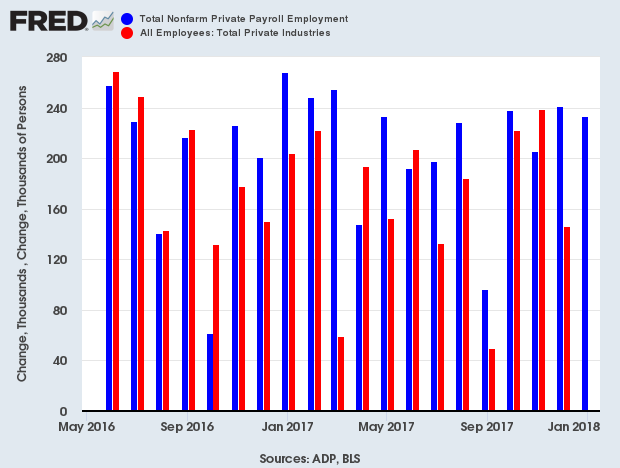

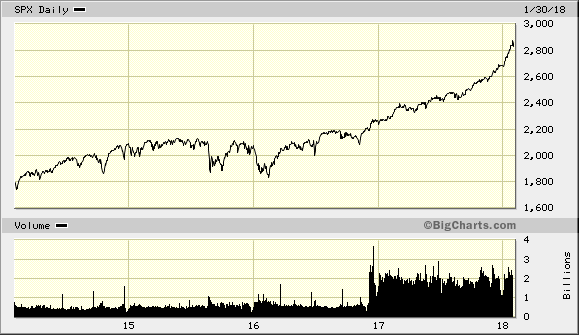
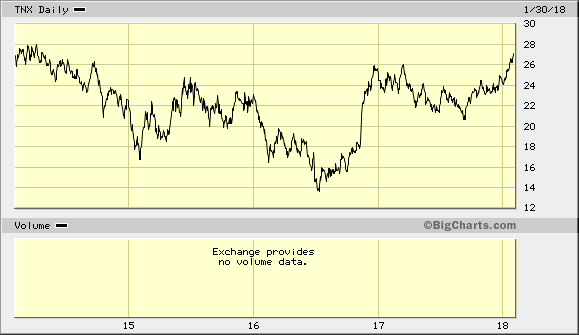
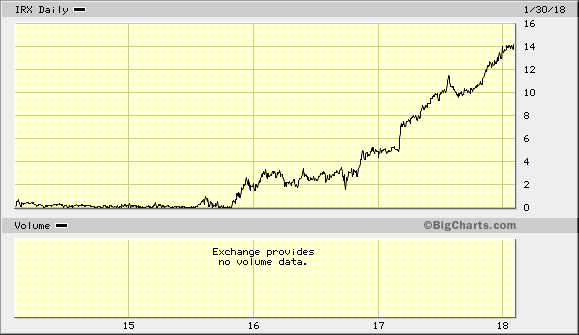
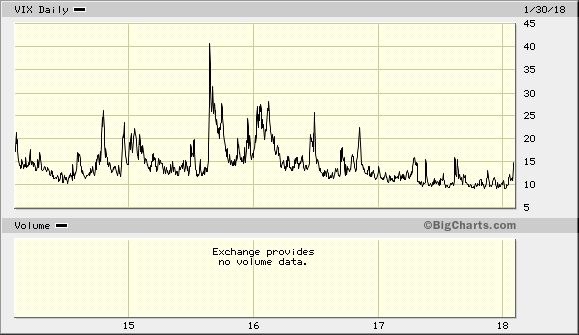
 Eddy Elfenbein is a Washington, DC-based speaker, portfolio manager and editor of the blog Crossing Wall Street. His
Eddy Elfenbein is a Washington, DC-based speaker, portfolio manager and editor of the blog Crossing Wall Street. His